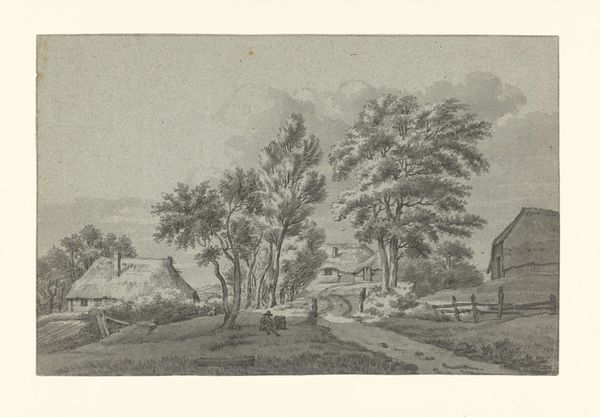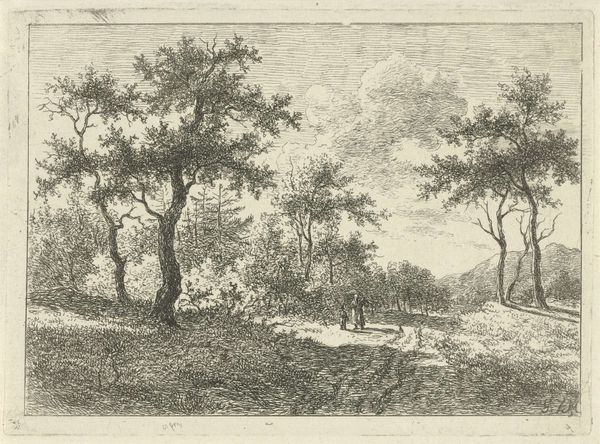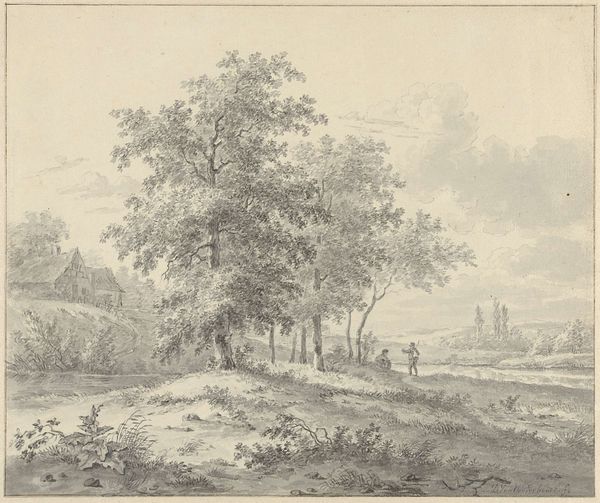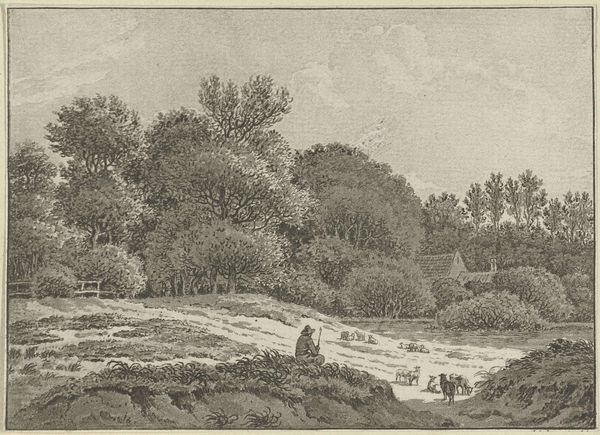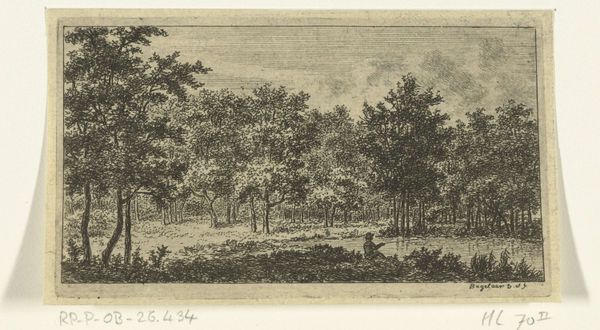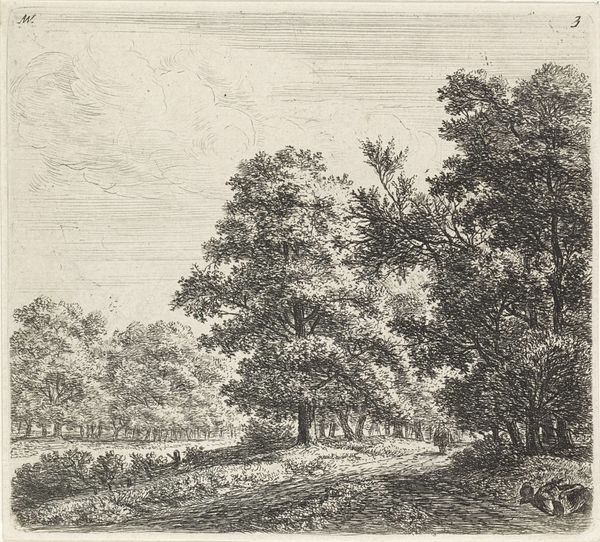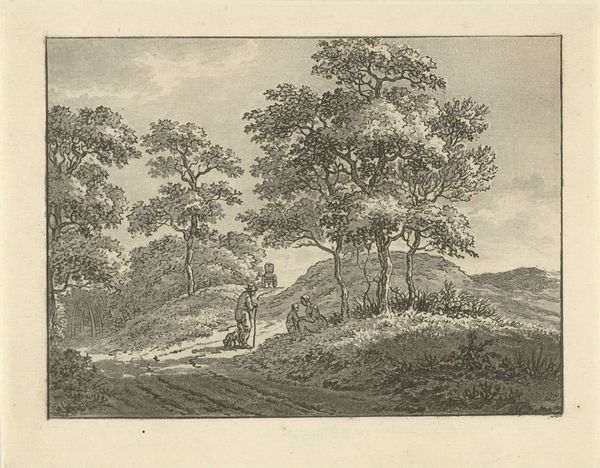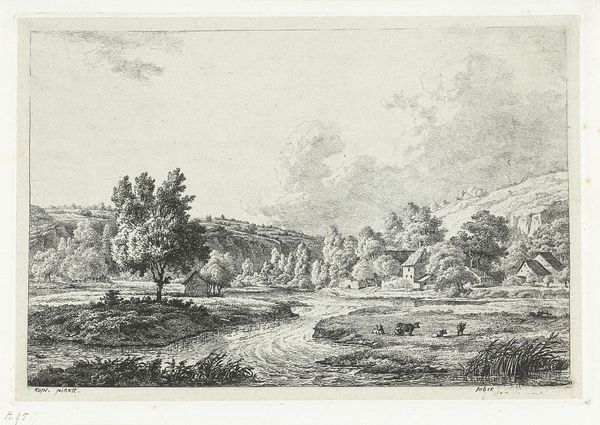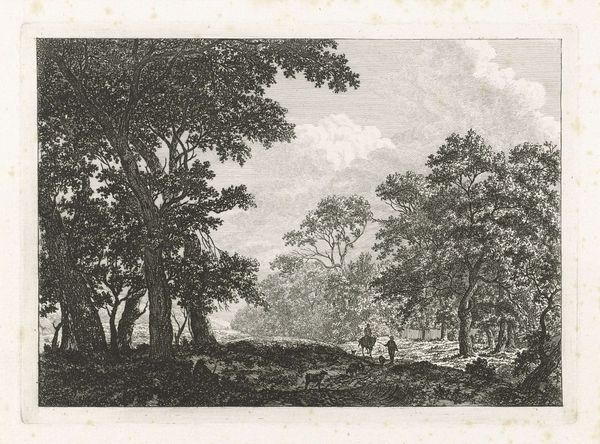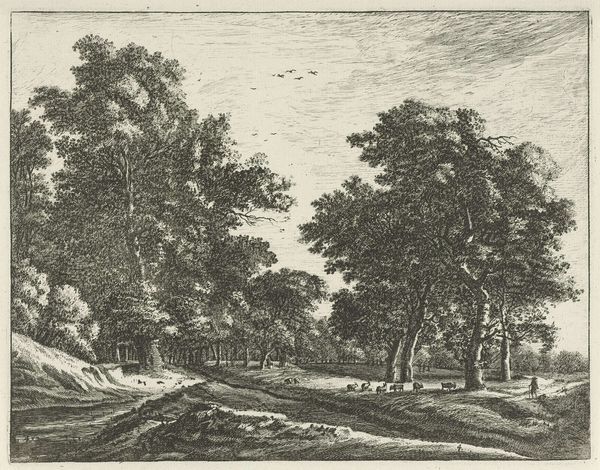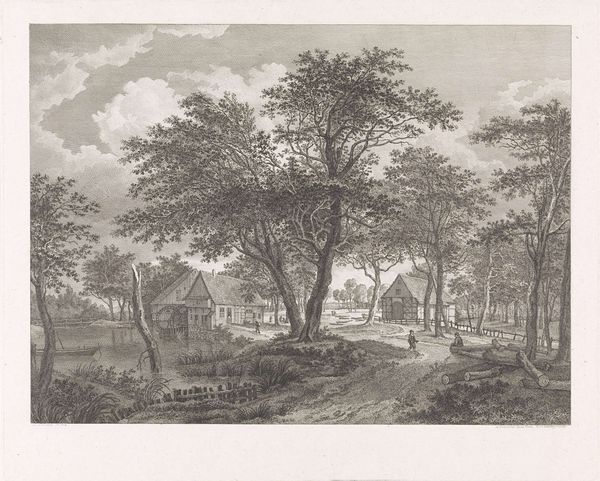
Dimensions: width 168 mm, height 129 mm
Copyright: Rijks Museum: Open Domain
Editor: This is "Landschap bij Overveen," a pencil drawing by Jan Evert Grave, dating sometime between 1769 and 1805. The scene feels so peaceful and removed. How do you interpret this work, especially given its historical context? Curator: This drawing provides us a window into the changing relationship between humans and the environment. Notice how the landscape isn't simply background; it’s foregrounded. What was Grave suggesting about humanity's place within that landscape at this historical moment? How does it intersect with nascent ideas about romanticism and our idealization of nature versus the political and social realities for everyday citizens? Editor: So, it's not just about pretty scenery then? More about the socio-political dynamics within the community it depicts? Curator: Exactly. Think about land ownership and access to resources in the Netherlands at this time. This idealized pastoral scene might mask deeper inequalities. Does this image serve to naturalize certain hierarchies, obscuring the struggles of those who may not have enjoyed such idyllic leisure? Editor: That’s fascinating. It makes me question my initial, somewhat naive, interpretation. It’s not just a simple landscape but a potentially loaded depiction of society and power. Curator: Precisely. And by understanding those power dynamics, we can develop a richer understanding of Dutch history as represented through its art. What new questions arise for you when you think of it this way? Editor: Now, I'm curious about who *owned* this land, who worked it, and how those unseen figures are represented or erased by the visual framing. Curator: Excellent questions. This shows how art serves not only as a reflection but also a site of ongoing negotiation and revelation.
Comments
No comments
Be the first to comment and join the conversation on the ultimate creative platform.
